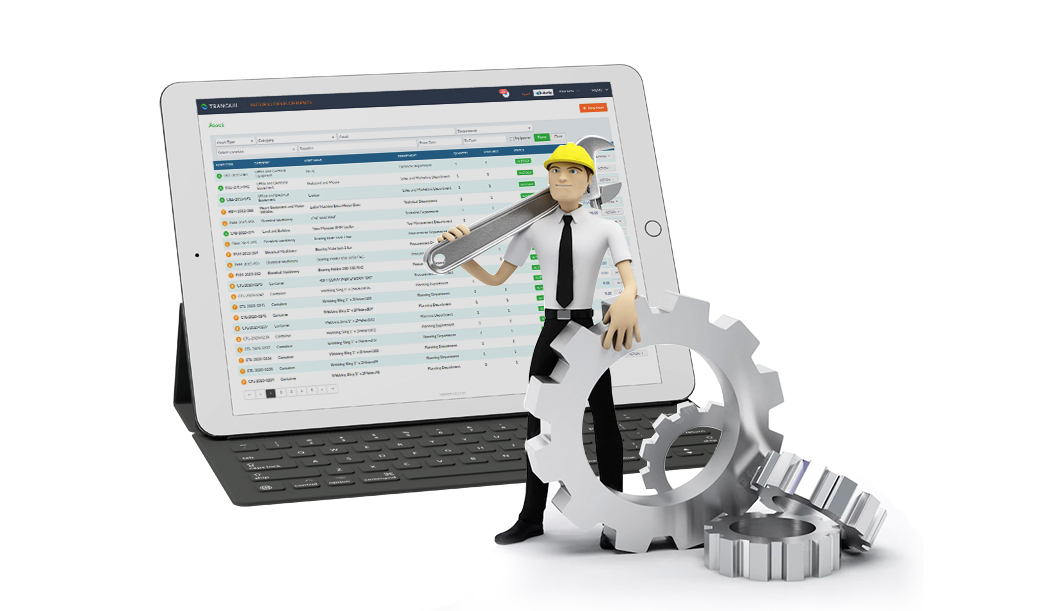
Asset management is an important function that helps to guarantee that the operational performance of assets can be optimized and that they stay reliable.
Asset lifecycle management helps in having improved control over asset health, and it forms the basis of asset management in business.
Organizations that have multiple expensive and complex assets require enterprise asset management.
Construction, defense, manufacturing, oil and gas, space, and such industries are the ones that require EAM, and asset management software.
The lack of proper asset management processes and/or software can give rise to heavy expenses for repairs and maintenance of assets, and lead to confusion regarding their status, the requirement of assets for the organization, and so on.
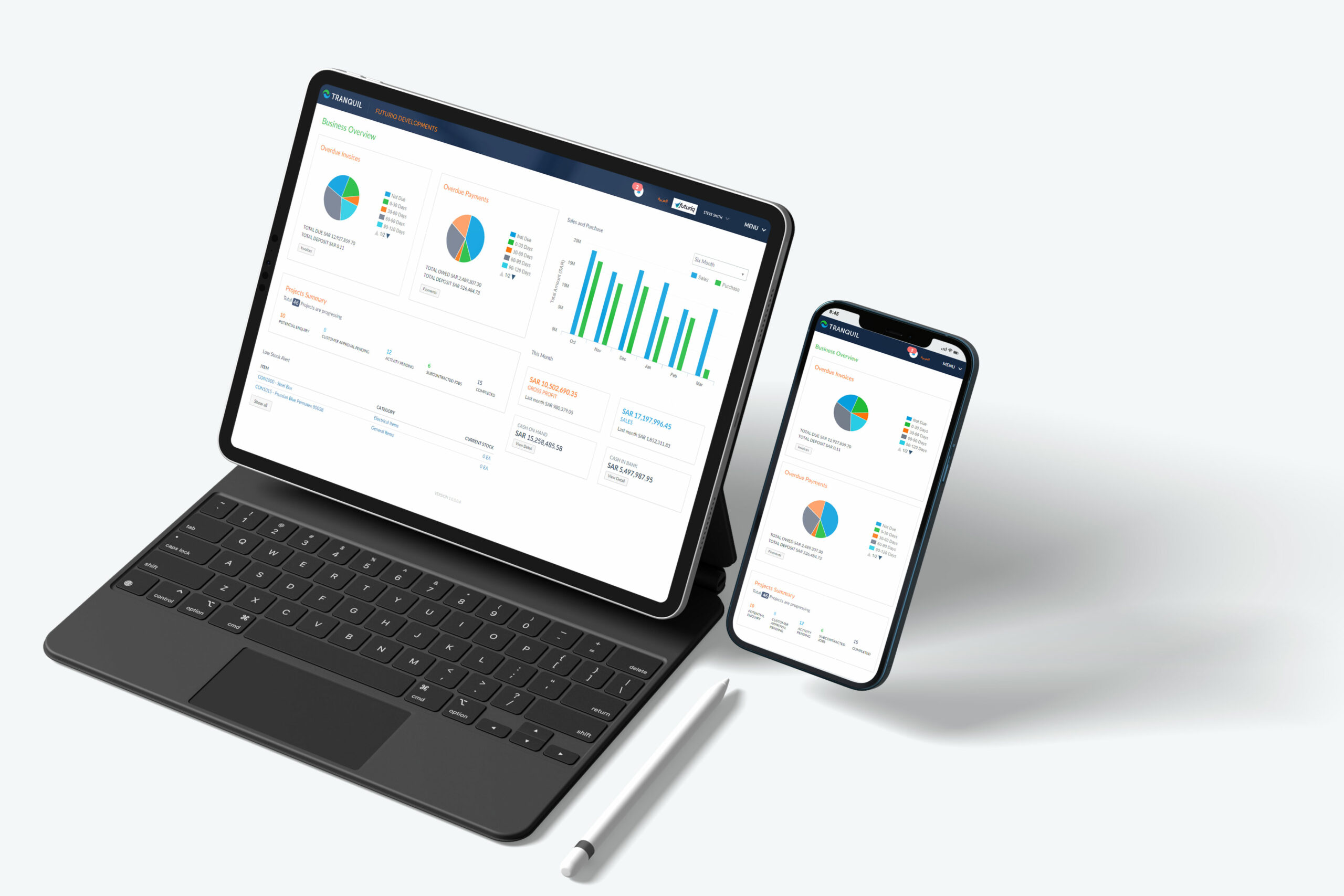
Some businesses maintain manual records of their assets.
However, manual records are subject to several shortcomings like redundancy of data, missing information, errors in recording, capable of being manipulated for fraudulent purposes, and so on.
You need an employee in charge of this activity, making sure the records are updated immediately when there is any change in the status of the assets.
Asset management software from Tranquil provides the following advantages:
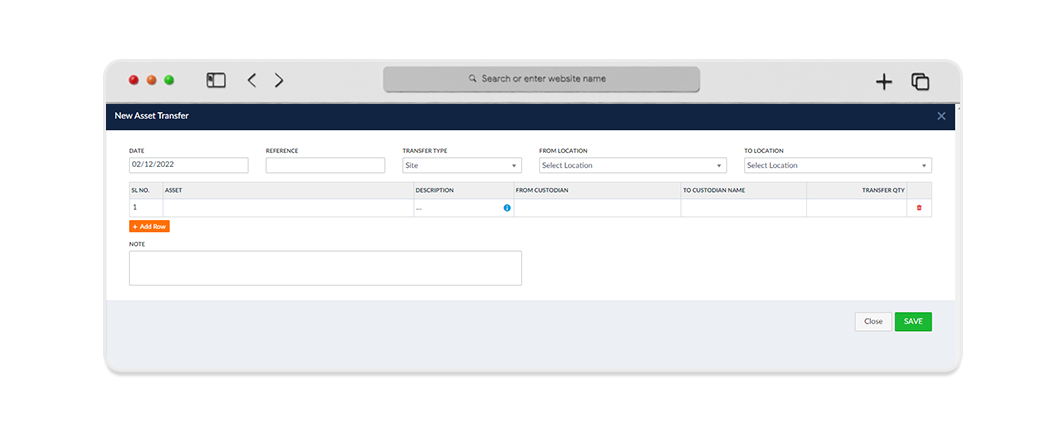
Assets like industrial equipment often need to be transferred within the organization. Tranquil lets you track your asset as you transfer it to a different site, department, or custodian.
For example:
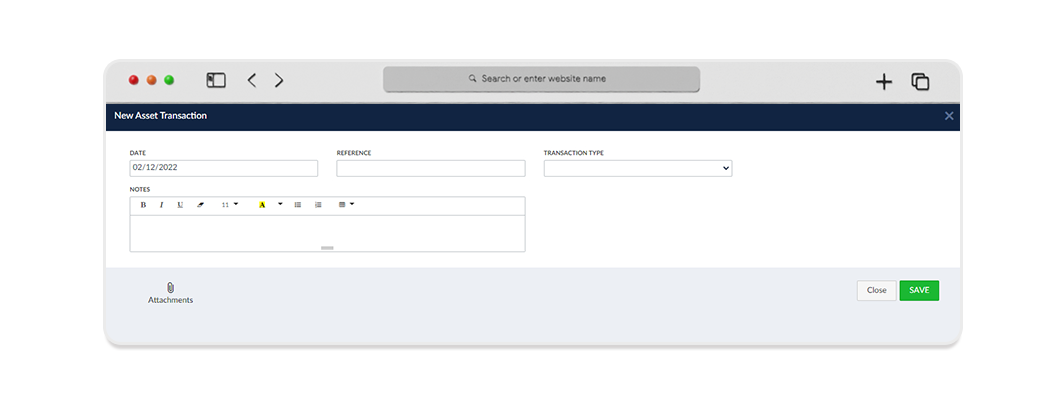
Tranquil asset management solution helps you monitor the asset throughout its lifecycle, from purchase to disposal and everything in between.
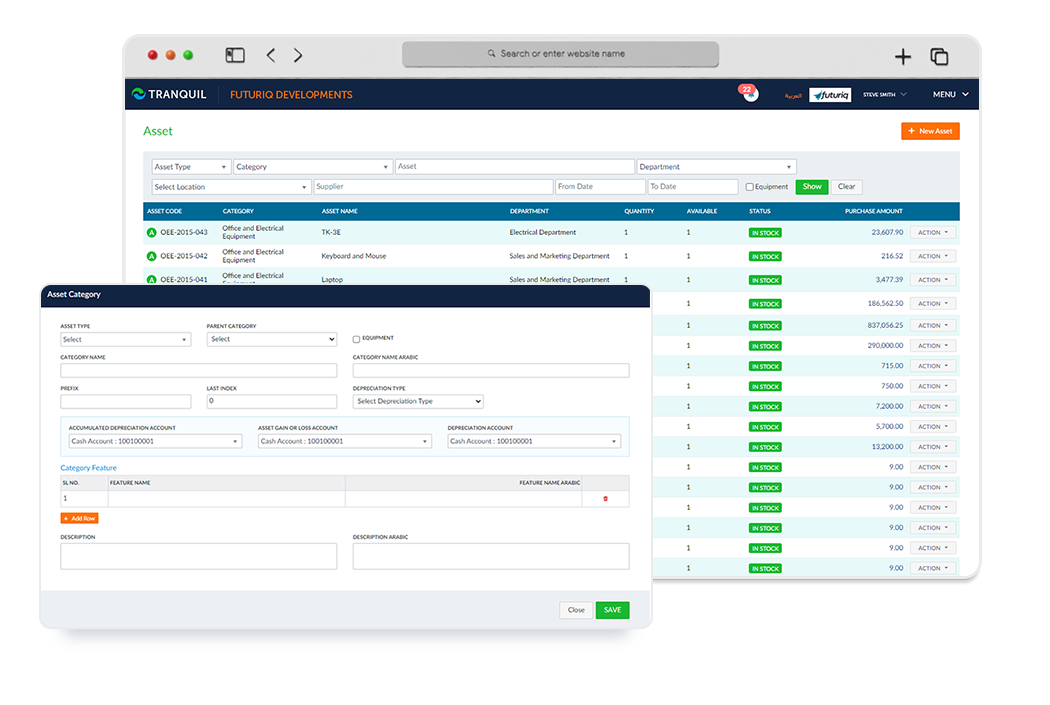
Assets represent ownership, have economic value, and help generate revenue for the business.
Fixed assets are of two broad categories – tangible and intangible.
Tangible assets are physical assets like office equipment, industrial machinery, furniture, vehicles, real estate property, and so on.
Intangible assets are those which cannot be seen but are essential to a business, like goodwill, patents, licenses, trademarks, and so on.
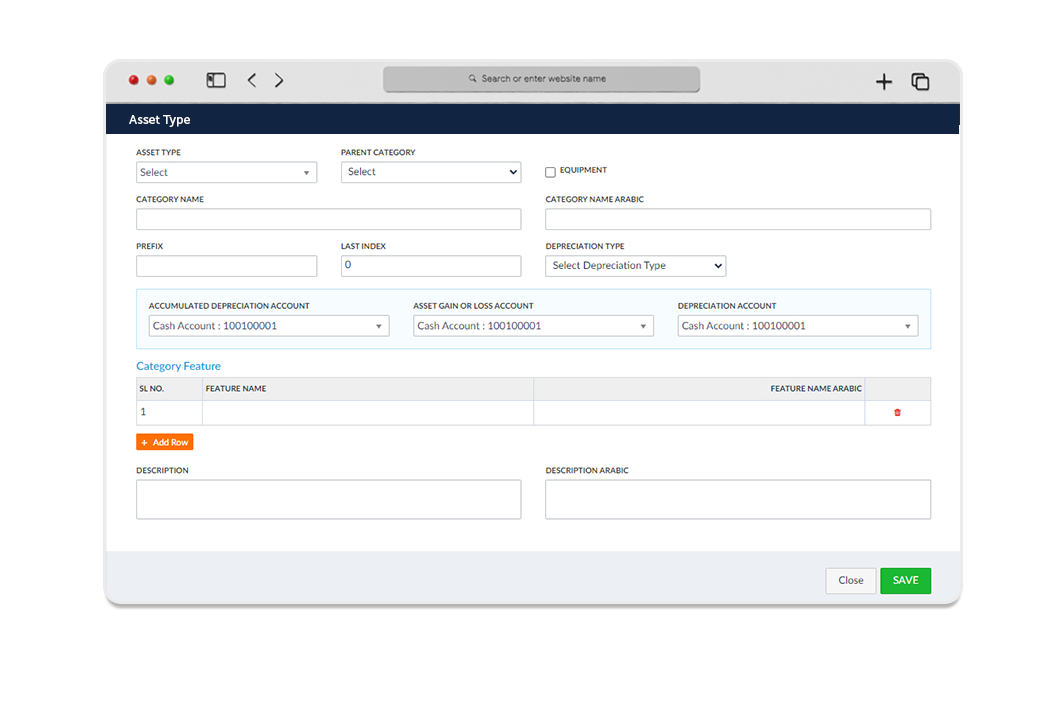
Divide your tangible assets into different types for easy maintenance.
Asset types include:
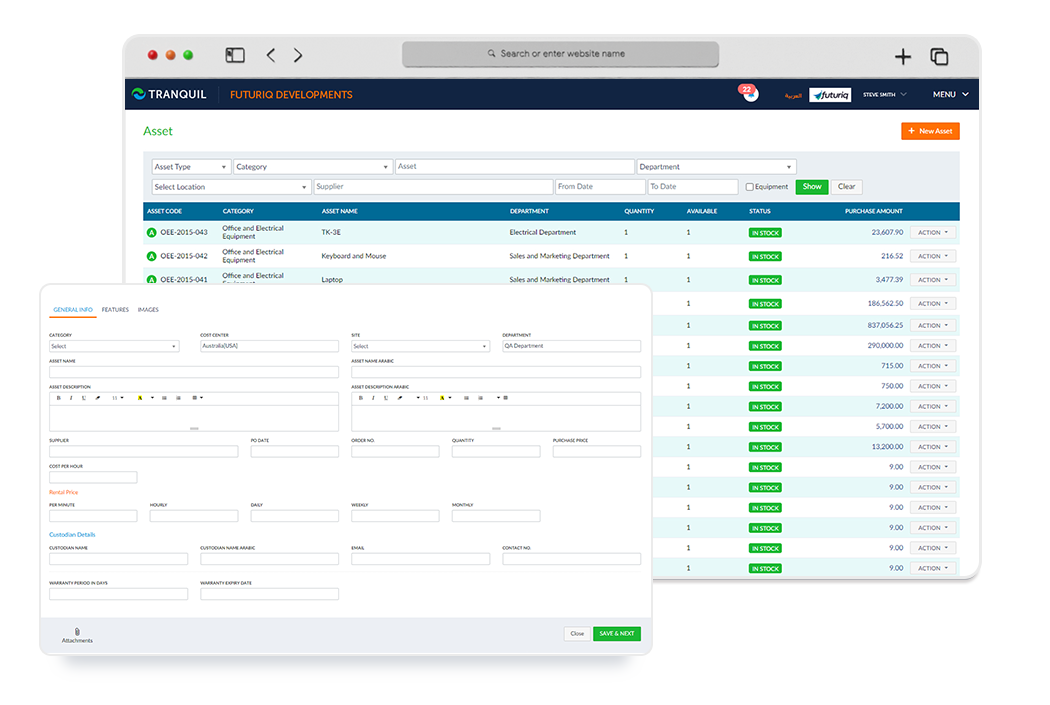
Track the status of your assets and ensure they are serviced at appropriate times to increase their operational efficiency and extend their lifecycle.
Avoid sudden breakdowns, downtimes, and expensive repairs.
Ensure continuous production and smooth workflows.
Maintain detailed records of each maintenance service and repair.
We would be happy to show you our software and help you determine if Tranquil ERP is right for your business.
Please complete this form and one of our Customer Success Advisors will contact you.